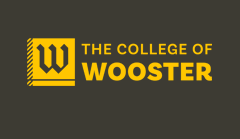Boolean Modeling of the Molecular Dynamics Governing the Epithelial and Endothelial Hypoxic Response
Abstract
The progression of solid tumors inevitably leads to a hypoxic tumor microenvironment, promoting metastatic cell behaviors such as epithelial to mesenchymal transition (EMT), as well as the formation of new, aberrant vasculature. In epithelial cells, the Hypoxia Inducible Factor (HIF) protein family is the primary driver of downstream signaling. Many of its transcriptional targets overlap with those of the well-established EMT inducer, Transforming Growth Factor-β (TGF-β). While crosstalk between these signals has been documented, the effect of the biophysical environment – another modulator of EMT – on the hypoxia response remains unexplored. Additionally, cells expressing HIF proteins promote the expression of Vascular Endothelial Growth Factor (VEGF), in turn driving angiogenesis in hypoxic tissues. In this study we use Boolean modeling to capture the dynamics of molecular signals that govern these cancer-linked behaviors in differing tumor microenvironments. We expand upon an existing mechanosensitive model to demonstrate the synergistic way hypoxia and TGF-β induce EMT. Our model indicates that each pathway can independently induce partial EMT under specific conditions, while their joint effect expands the microenvironments in which full EMT occurs. To model the dynamics behind angiogenesis, we have developed a central pattern generator capable of selecting tip and stalk phenotypes for endothelial cells in response to VEGF signaling. Our model reproduces Notch signaling induced lateral inhibition, which prevents hyper-sprouting in healthy endothelial vessels. We also predict that transition to a fully uninhibited tip cell state involves partial EMT, leading to migration as well as proliferation. Interestingly, even mild lateral inhibition could block tip cell proliferation in our model, without impacting its hybrid E/M phenotype. These models lay the groundwork for building a comprehensive network model of all single-cell level cancer hallmarks. Then, future development of tissue-level models of tumor development and angiogenesis can help disentangle the impacts of the tumor microenvironment vs. cancer-driving mutations.
Advisor
Regan, Erzsébet
Department
Biochemistry and Molecular Biology
Recommended Citation
Greene, Grant Kenneth, "Boolean Modeling of the Molecular Dynamics Governing the Epithelial and Endothelial Hypoxic Response" (2024). Senior Independent Study Theses. Paper 11204.
https://openworks.wooster.edu/independentstudy/11204
Disciplines
Molecular Biology
Keywords
computational biology, Boolean modeling, cancer biology, signaling cascades, epithelial to mesenchymal transition, angiogenesis, hypoxia, tumor microenvironment, in silico, systems biology
Publication Date
2024
Degree Granted
Bachelor of Arts
Document Type
Senior Independent Study Thesis
.dmms File for Hypoxia model
Greene_Endothelial_Model.dmms (1925 kB)
.dmms File for Endothelial/Angiogenesis model
Greene_Hypoxia_Model_Figures.vex (9 kB)
.vex File used to generate figures from Hypoxia model
Greene_Endothelial_Model_Figures.vex (5 kB)
.vex File used to generate figures from Endothelial/Angiogenesis model
Greene_Hypoxia_Model_SM_complete.pdf (1302 kB)
Supplementary Table containing all model information and citations for Hypoxia model
Greene_Endothelial_Model_SM.pdf (658 kB)
Supplementary Table containing all model information and citations for Endothelial/Angiogenesis model
© Copyright 2024 Grant Kenneth Greene
